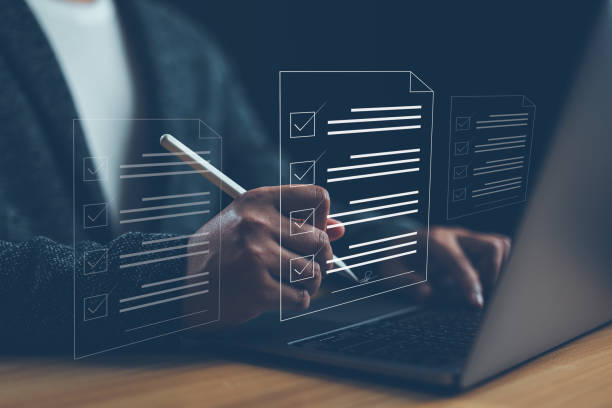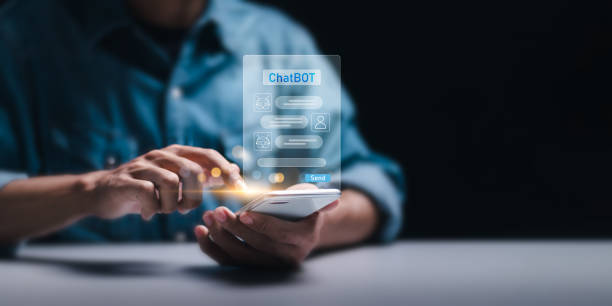Introduction to the Importance of On-Page SEO and Its Role in Website Optimization
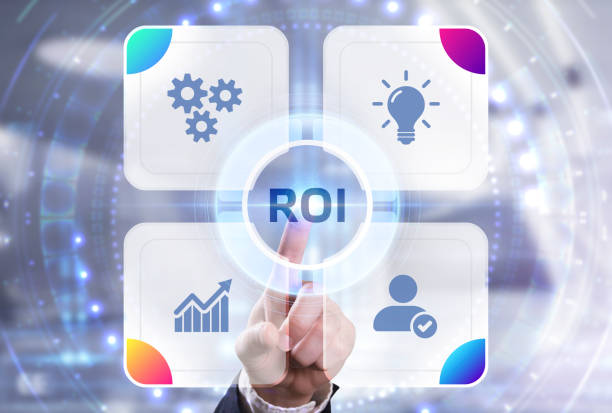
On-Page SEO, sometimes referred to as #On-Page Optimization, is the cornerstone of any #website’s success in #search_engine results.
This vital process involves a series of actions performed within your website to improve its ranking for target keywords.
Unlike off-page SEO, which focuses on link building and activities outside the site, on-page SEO directly focuses on controlling and optimizing elements over which you have complete control, such as content, HTML code, and site structure.
In this educational section, we will explain the importance of on-page SEO and clarify why it is crucial for your website’s visibility in today’s competitive world.
Ignoring this aspect of optimization can completely nullify your efforts to attract organic traffic and keep your site hidden from users.
The ultimate goal of on-page SEO is not only to attract search engines but also to provide an unparalleled user experience that encourages users to stay and explore your site further.
Further in this guide, we will delve into the various dimensions and effective implementation techniques of on-page SEO.
Do you dream of a thriving online store but don’t know where to start?
Rasaweb is your comprehensive e-commerce website design solution.
✅ Attractive and user-friendly design
✅ Increased sales and revenue⚡ Get Free Consultation
The Key Role of Keywords in On-Page SEO Optimization and How to Choose Them

The correct and strategic selection of keywords is the backbone of any successful on-page SEO campaign.
Without the right keywords, even the best content cannot reach its target audience.
This specialized section will guide you on how to identify relevant and highly searched keywords for your business or website.
The first step is a deep understanding of your target audience and their needs.
What questions do they have? What phrases do they enter into search engines? Keyword research tools such as Google Keyword Planner, Ahrefs, and Semrush can significantly assist you in this process.
In addition to search volume, also pay attention to keyword competitiveness.
Sometimes, focusing on long-tail keywords, which have lower search volume but are much more targeted, can yield better results.
After identifying keywords, you should naturally and logically embed them into your content, titles, meta descriptions, and URLs.
This approach helps search engines understand the main topic of your page and display it to relevant users, resulting in continuous improvement of on-page SEO.
Content Optimization; The Beating Heart of On-Page SEO
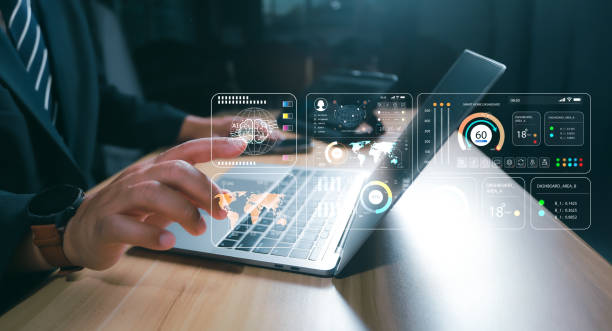
Content is king, and this principle holds true more than ever in the realm of on-page SEO.
High-quality and valuable content not only attracts users but also encourages search engines to rank it higher.
In this explanatory and analytical section, we will delve into various aspects of content optimization.
Your content should be accurate, comprehensive, and responsive to user needs.
Natural use of keywords, proper structuring with headings (H1 to H6), short and readable paragraphs, and the use of lists and bullet points all contribute to improving readability and user experience.
Additionally, adding visual content such as images and videos increases page appeal and can boost user dwell time on your site.
Content quality is not limited to text; it also depends on its presentation.
| Element | Best Practice | SEO Impact |
|---|---|---|
| Keywords | Natural use, avoid overstuffing | Search engines understanding the topic |
| Content Structure | Use of H1-H6, short paragraphs | Improved readability and user experience |
| Content Quality | Comprehensive, accurate, and responsive to user needs | Increased authority and ranking |
| Visual Elements | Relevant and optimized images and videos | Increased dwell time and reduced bounce rate |
The most important step to strengthen on-page SEO through content is to produce content that is valuable not only for search engines but also for humans.
Content that engages users and answers their questions is automatically rewarded by search engines.
This is a comprehensive approach to optimization that will yield lasting and effective results.
Technical Aspects of On-Page SEO and Their Impact on Ranking

In addition to content, the technical aspects of on-page SEO also play a vital role in determining your site’s ranking in search engines.
These specialized and analytical elements include those directly related to your website’s coding and underlying structure.
Among the most important is page loading speed; a site that loads quickly provides a better user experience and is given more attention by Google.
Image optimization, code compression, and the use of CDN (Content Delivery Network) are ways to increase speed.
Proper and readable URL structure, use of HTTPS protocol for security, and mobile optimization (Mobile-Friendliness) are also key factors.
Google strongly emphasizes Mobile-First Indexing, meaning that the mobile version of your site is used for initial ranking.
Checking the Robots.txt file and XML Sitemap is also essential to ensure proper crawling by search engines.
Strong on-page SEO includes a solid technical foundation that allows search engine crawlers to access and understand your content.
Does your company website perform as your brand deserves? In today’s competitive world, your website is your most important online tool. Rasaweb, specializing in professional corporate website design, helps you to:
✅ Gain customer credibility and trust
✅ Convert website visitors into customers
⚡ Get a free consultation!
The Importance of Internal Linking in On-Page SEO Strategy
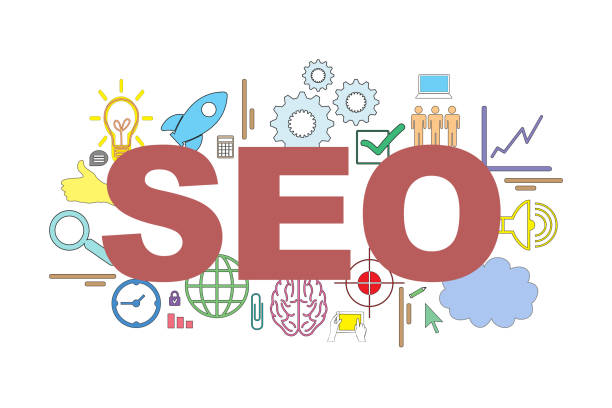
Internal linking is one of the most powerful tools available to you for strengthening on-page SEO.
This process involves creating links from one page to another within the same website.
The main goal of internal linking is not only to help users navigate your site more easily but also to distribute authority and power among different pages.
When a powerful and authoritative page links to another page, it passes a portion of its authority to that page.
This helps search engines better understand your site’s structure and recognize the importance of different pages.
Also, internal links, using relevant anchor texts, help search engines better understand the topic of the linked page.
This guide will help you design an effective internal linking strategy.
Use natural and relevant links within your content, and ensure that no important page on your site remains “orphaned” (without internal links).
With a strong internal linking strategy, we can improve page discoverability and indexation, and ultimately, enhance the overall site ranking.
Title Tags and Meta Descriptions; A Window to Search Engines
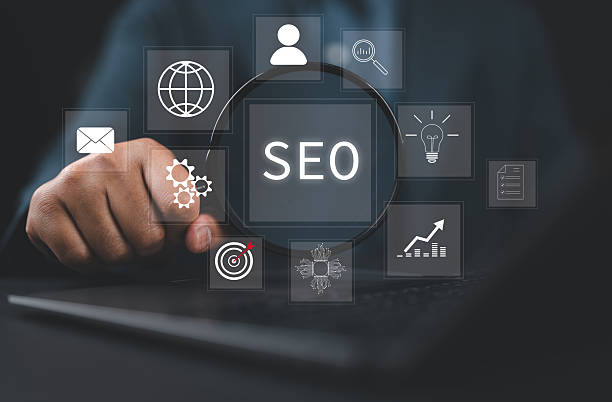
Title Tags and Meta Descriptions are crucial elements in on-page SEO that directly impact how your page appears in search results.
The title tag, which acts as
news
and
explanatory
for search engines, is the first thing users see on the Search Engine Results Page (SERP) and should clearly describe the page’s content.
This tag should include the page’s main keywords and be written attractively and persuasively to encourage users to click.
The appropriate length for a title tag is usually around 50 to 60 characters to be fully displayed in the SERP.
Meta descriptions, although not directly influential in ranking, play a significant role in click-through rate (CTR).
An appealing meta description that provides a summary of the page’s content and includes a call-to-action can guide users to your site.
Google may rewrite your meta description, but efforts to write an accurate and relevant meta description increase the chance of it being displayed and help improve your on-page SEO.
Optimizing Images and Multimedia Content to Increase On-Page SEO Effectiveness

Visual content, including images and videos, is an integral part of the modern user experience and plays an important role in the on-page SEO strategy.
This educational and guidance section shows you how to optimize these elements.
The first step is to compress images to reduce file size without significant loss of quality to improve page loading speed.
The use of modern image formats like WebP is also recommended.
The most important aspect of image optimization for SEO is the use of Alternative Text (Alt Text).
Alt Text provides a concise and accurate description of the image content and is important for search engines and visually impaired users who use screen readers.
Alt Text should include relevant keywords but should not be overstuffed with keywords.
Image file names should also be descriptive and include keywords.
For videos, using video sitemaps and providing a transcript of the video content can help search engines better index your video content.
By precisely optimizing these multimedia elements, we can not only improve the user experience but also send more positive signals to search engines and help strengthen the overall on-page SEO of the site.
| Action | Details | SEO Result |
|---|---|---|
| Image Compression | Reduce file size without quality loss | Increase page loading speed |
| Use of Alt Text | Brief and accurate description including keywords | Understandability for search engines and accessibility |
| File Naming | Descriptive names relevant to keywords | Helps search engines understand content |
| Format Selection | Use of modern formats like WebP | Improved performance and speed |
User Experience (UX) and Its Connection to On-Page SEO
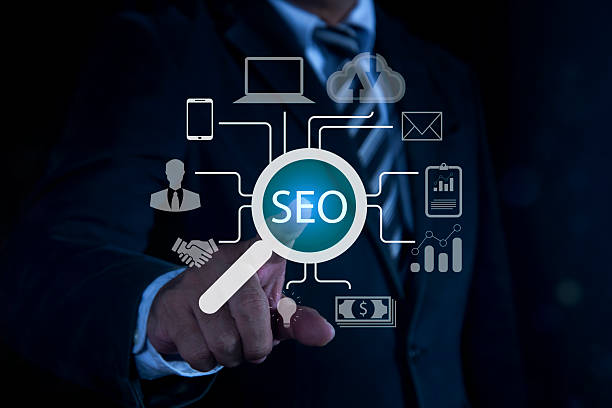
Search engines, especially Google, are increasingly emphasizing User Experience (UX) as a ranking factor.
An excellent UX means a site that is not only attractive and user-friendly but also loads quickly, is easily navigable, and has easily accessible content.
This analytical and engaging section shows you how improving UX can directly impact your on-page SEO.
Factors such as a low bounce rate and high dwell time on the page send positive signals to search engines, indicating user satisfaction with your content.
Responsive Design for proper display across all devices, the use of readable fonts, appropriate white space, and clear call-to-action buttons all contribute to improving the user experience.
Consider that the better experience users have on your site, the higher the probability of their return and conversion into loyal customers.
Remember that on-page SEO is not just about Google’s crawlers; it’s about the people who visit your site.
When you focus on user experience, you subconsciously strengthen your site’s on-page SEO as well.
Are you tired of your e-commerce site having visitors but no sales? Rasaweb solves your main problem with professional e-commerce website design!
✅ Significant sales increase with targeted design
✅ Seamless user experience for your customers
⚡ Get a free consultation!
Common Mistakes in On-Page SEO and How to Avoid Them

On the path to optimizing on-page SEO, there are some common mistakes that can render your efforts fruitless.
This thought-provoking and informative section addresses the most common of these errors and how to prevent them.
Did you know that overstuffing content with keywords (Keyword Stuffing) is not only useless but can also harm your site’s ranking? Or that using duplicate content can confuse search engines? Other mistakes include lack of image optimization, broken links, slow loading speed, and neglecting Mobile-Friendliness.
Disregarding title tags and meta descriptions, or ignoring the hierarchical structure of Headings (H1, H2, H3…) are also common errors.
To avoid these issues, always adopt a comprehensive and user-centric approach.
Regularly review your site both technically and in terms of content.
Use tools like Google Search Console to identify crawling errors and indexing issues.
By being aware of these mistakes and working to fix them, you can effectively improve your site’s on-page SEO and prevent serious ranking problems.
Tools and Methods for Monitoring and Analyzing On-Page SEO for Sustainable Success

After implementing on-page SEO strategies, the next stage is performance monitoring and analysis.
This specialized and analytical section will guide you on how to measure your progress and discover new opportunities using appropriate tools.
Google Analytics and Google Search Console are two free and essential tools that provide valuable information about site traffic, searched keywords, crawl errors, and page performance.
By analyzing the data from these tools, you can understand which pages are performing well and which ones need further optimization.
Paid tools like Ahrefs, Semrush, and Moz also offer more advanced capabilities such as competitor analysis, backlink checks, and site audits, which help you further improve your on-page SEO.
Furthermore, continuous monitoring of keyword rankings, click-through rate, user dwell time, and bounce rate allows you to evaluate the impact of implemented changes.
The world of SEO is constantly changing, and Google’s algorithms are regularly updated.
Therefore, continuous monitoring and adaptation to changes are key to sustainable success in on-page SEO.
Frequently Asked Questions
| Question | Answer |
|---|---|
| What is a Meta Title and why is it important in on-page SEO? | The meta title is the most important element of on-page SEO, displayed at the top of the browser tab and in search results. It helps search engines and users understand the main topic of the page and should include the primary keyword. |
| What role does the Meta Description play in on-page SEO? | The meta description is a short summary of the page’s content displayed under the title in search results. Although it doesn’t directly impact ranking, its attractiveness can increase the click-through rate (CTR). |
| How should keywords be used in page content? | Keywords should be used naturally and relevantly in strategic locations such as the title, headings, first paragraph, and body text. Avoid keyword stuffing. |
| What is the importance of high-quality and comprehensive content in on-page SEO? | High-quality, unique, informative, and comprehensive content that addresses user needs is of high importance. Search engines give higher rankings to content that creates real value. |
| What is the use of heading tags (H1-H6) in on-page SEO structure? | Heading tags (H1, H2, H3, etc.) are used to structure content and indicate the importance of different sections. H1 is the main title of the page, and each page should only have one H1. Other tags are used for subheadings. |
| How can images be optimized to improve on-page SEO? | To optimize images, use descriptive alt text that includes relevant keywords, reduce the image file size without significant quality loss, and use meaningful and relevant file names. |
| What characteristics does an SEO-friendly URL have for on-page SEO? | An SEO-friendly URL should be short, readable, descriptive, include main keywords, and be free of extra characters. The URL structure should be hierarchical and logical to be understandable for both users and search engines. |
| How does Internal Linking help with on-page SEO? | Internal linking, by connecting related pages, helps users and search engine crawlers better understand the site’s structure, transfers page authority, and increases user time on site. |
| What is the impact of page loading speed on on-page SEO? | High loading speed is crucial for both user experience and SEO ranking. Slower pages may be overlooked by search engines and lead to an increased Bounce Rate. |
| Why is Mobile-Friendliness highly important in on-page SEO? | Given the increasing number of searches via mobile devices, having a responsive and mobile-friendly site is essential for user experience and ranking in search results (Google’s Mobile-First Indexing). |
And other services of Rasaweb Advertising Agency in the field of advertising
Smart Customer Journey Map: A fast and efficient solution for digital branding with a focus on Google Ads management.
Smart Digital Advertising: A fast and efficient solution for analyzing customer behavior with a focus on attractive user interface design.
Smart Advertising Campaign: A creative platform for improving SEO rankings with precise audience targeting.
Smart Website Development: An effective tool for user engagement with the help of intelligent data analysis.
Smart Marketing Automation: A dedicated service for increasing website traffic based on intelligent data analysis.
And over a hundred other services in the field of internet advertising, advertising consultation, and organizational solutions
Internet Advertising | Advertising Strategy | Advertorials
Sources
Faradid Comprehensive On-Page SEO Guide
Key On-Page SEO Tips on Virgool
Complete On-Page SEO Tutorial from Modir
SeoEdu On-Page SEO Checklist
? Looking to grow and be seen in the online world? Rasaweb Afarin Digital Marketing Agency, specializing in custom website design, SEO, and advertising campaign management, paves the way for your business’s success.
📍 Tehran, Mirdamad Street, next to Bank Markazi, Southern Kazeroon Alley, Ramin Alley, No. 6

